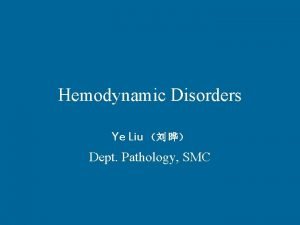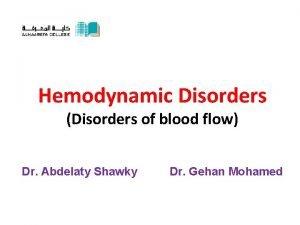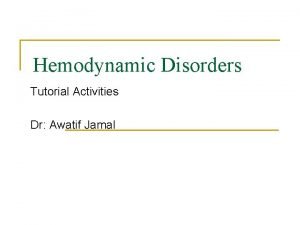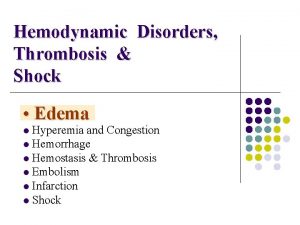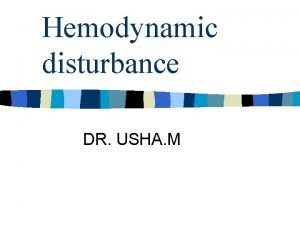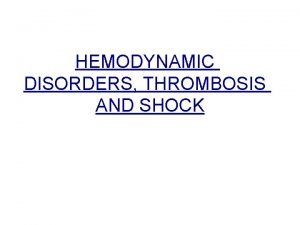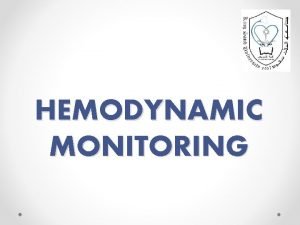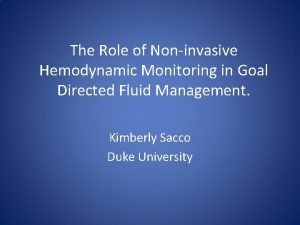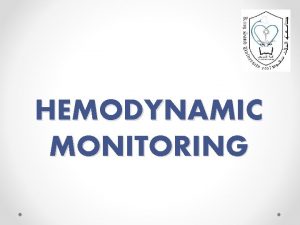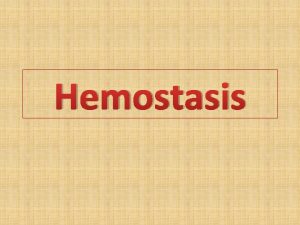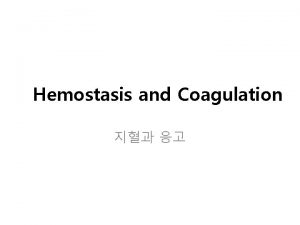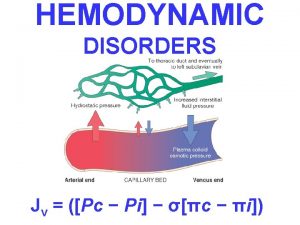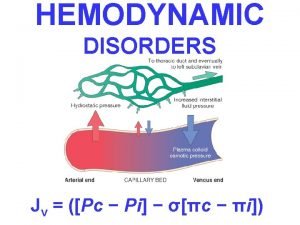Hemodynamic disorders 1 Hemostasis 1 Hemostasis v Hemostasis








- Slides: 8

Hemodynamic disorders -1 Hemostasis 1

Hemostasis v Hemostasis is a precisely orchestrated process involving platelets, clotting factors, and endothelium that occurs at the site of vascular injury and culminates in the formation of a blood clot, which serves to prevent or limit the extent of bleeding. v The arrest of bleeding – Hemo = Blood , Stasis = stop, slow v The pathologic counterpart of hemostasis is thrombosis, the formation of blood clot (thrombus) within non-traumatized, intact vessels. 2

The general sequence of events leading to hemostasis. . • Arteriolar vasoconstriction • Primary hemostasis: the formation of the platelet plug • Secondary hemostasis: deposition of fibrin • Clot stabilization and resorption 3

Arteriolar vasoconstriction • Occurs immediately and markedly reduces blood flow to the injured area. • Imediated by reflex neurogenic mechanisms and augmented by the local secretion of factors such as endothelin. • Endothelin a potent endothelium-derived vasoconstrictor. • This effect is transient, and bleeding would resume if not for activation of platelets and coagulation factors. 4

Primary hemostasis: the formation of the platelet plug • Disruption of the endothelium exposes subendothelial von Willebrand factor (v. WF) and collagen. • Promote platelet adherence and activation. • Results in a dramatic shape change (small rounded discs flat plates with spiky protrusions that markedly increased surface area). Also the release of secretory granules. • secretory granules : recruit additional platelets, which undergo aggregation to form a primary hemostatic plug 5

Secondary hemostasis: deposition of fibrin. • Vascular injury exposes tissue factor at the site of injury. • Tissue factor is a membrane-bound procoagulant glycoprotein , normally expressed by subendothelial cells in the vessel wall (smooth muscle cells and fibroblasts). • It binds and activates factor VII a cascade of reactions thrombin generation Thrombin cleaves circulating fibrinogen insoluble fibrin creating a fibrin meshwork • Fibrin is a potent activator of platelets, leading to additional platelet aggregation • These events create the initial platelet plug. 6

Clot stabilization and resorption • Polymerized fibrin and platelet aggregates undergo contraction to form a solid, permanent plug that prevents further hemorrhage. • At this stage, counter regulatory mechanisms (e. g. , tissue plasminogen activator, t-PA made by endothelial cells) are set into motion that limit clotting to the site of injury. • This mechanisms eventually lead to clot resorption and tissue repair. 7

Thank You! 8
